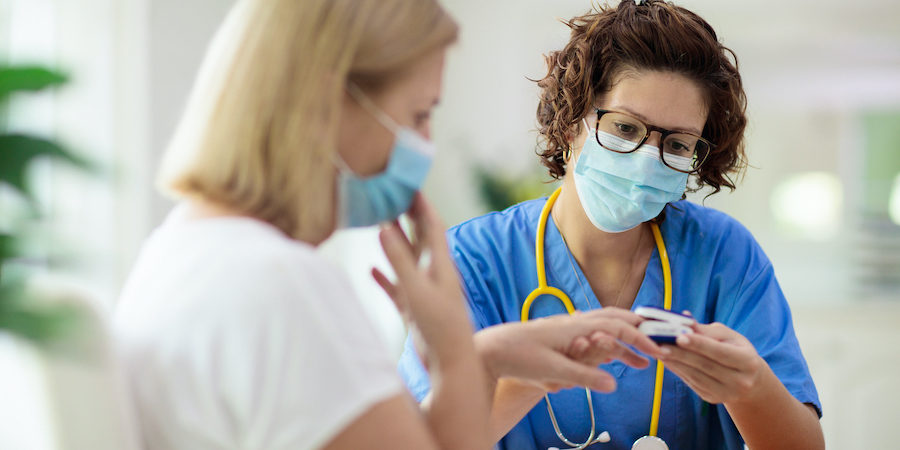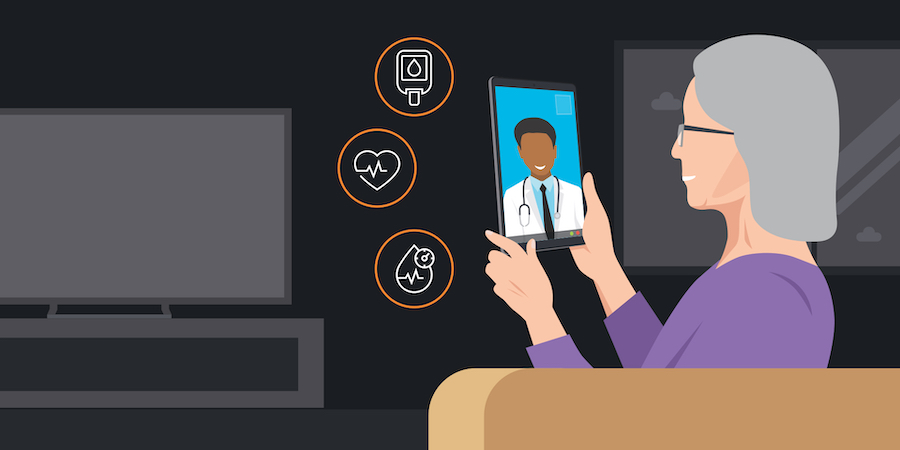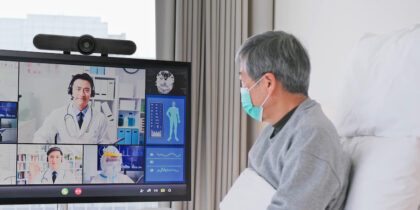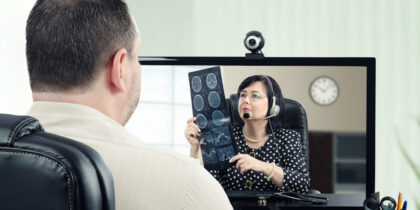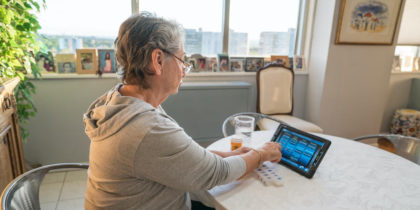Tammy Aubel expected 2020 to be a challenging year. As vice president of homecare at McLaren Health Management Group, she knew the new Patient-Driven Groupings Model (PDGM) payment system would create challenges when it took effect in January and her team would need to adjust to other changes throughout the year. As Aubel puts it, “Homecare changes all the time. If something’s not changing, it surprises me.” While she didn’t expect COVID-19, Aubel had the data she needed to face the challenge head on, thanks to Homecare Homebase.
Founded in 1999 by industry veterans, Homecare Homebase is now the leading software provider for home-based care and hospice providers. An innovator in mobile electronic health records (EHRs), Homecare Homebase has evolved its technology into a cloud-based automation solution that enables real-time data exchange and communication among field staff, office and physicians. And for home healthcare leaders like Aubel, it’s also a data reporting system with sophisticated productivity and care analytics.
Managing costs and home-based care in the COVID era
In January 2020, many home-based care organizations were still struggling to adapt to PDGM, and leaders worried that the new reimbursement model might hurt their bottom line. Homecare Homebase showed Aubel what to expect and what to adjust to maximize profitability under PDGM.
“We spent the second half of 2019 really focusing on how the payment model would change our revenue,” says Aubel, “and Homecare Homebase did a really good job of projecting that for us. The report helped us identify the behaviors or processes we needed to change. And we didn’t have to change much. Without getting that information, I think we would have had a lot of challenges with PDGM.”
How to build a successful remote patient monitoring program
Discover the RPM solutions and best practices that transform the patient experience and improve health outcomes. Download Now
The transition to PDGM didn’t hurt McLaren Health Management’s business, but COVID-19 did in the beginning. Their patient census, usually more than 3,000 homecare and hospice patients, dropped by roughly 400 patients starting in mid-April. Aubel says Homecare Homebase was a big reason why her organization survived — and thrived — amid COVID.
“The reports we were getting from Homecare Homebase — about our PDGM case-mix rate, our LUPA rate, and what our revenue would look like — really helped us be proactive rather than reactive. In June, our census popped right back up, and overall we were very successful in fiscal year 2020.”
In addition to revenue projection reports, McLaren Health relied heavily on Homecare Homebase’s COVID tracking reports, which helped Aubel’s team manage frontline workers’ PPE supply, which they needed to safely treat COVID patients. The Homecare Homebase solution also allowed for easy onboarding and management of new patient populations, including both COVID patients and non-COVID patients who were now avoiding hospitals and doctor’s offices.
How tablets supported home-based care in quarantine
McLaren’s census dropped in March because elective surgeries were canceled and hospital referrals slowed dramatically. Chronically ill patients wanted to avoid in-person doctor’s visits, and with social distancing came increased physician referrals. To bridge the gap, physicians needed reliable remote patient monitoring (RPM) and telemedicine. They knew McLaren had the healthcare technology, including Medtronic remote monitoring software, fully integrated with Homecare Homebase. With the solution installed on Samsung Galaxy tablets, care providers could carry the technology with them to patients’ homes.
Homecare Homebase’s field solution is a sophisticated mobile EHR platform, available exclusively on Samsung tablets. These customized devices make it easy for home-based care providers to manage their schedule, document patient care in real time and communicate with the home office. And with HIPAA-compliant videoconferencing capabilities — which are now invaluable — physicians can meet with new homecare patients face to face, as required by Medicare.
“Doctors were calling us saying ‘My patient can’t get into the doctor’s office. I saw them two months ago. Wanna have them open for home care? Can you do a televisit when you go in to establish the patient?'” says Aubel. “I think them knowing we had the ability to do that really helped us a lot.”
Value beyond COVID
Before joining McLaren Health, Aubel was a homecare nurse, and she had to document patient care on an outdated laptop or by hand, which made it difficult for her to make real-time updates. The Homecare Homebase solution at McLaren was a game changer, and the technology has only improved since.
“I really like Homecare Homebase in the field and in the back office,” she says.
“I really like Homecare Homebase in the back office and in the field,” she says. “It’s a very user-friendly EHR system, the tablet is lightweight and easy to use, and staff can document everything through their device in real time. All data either flows from the field staff to the back office or from the back office to the field staff, which makes communication and workflows easier for everyone.”
For example, when a referral goes into the system, it’s first sent to the managed care department and then goes to back-office leadership, who review the referral and approve it. The referral then goes to the scheduling team, who send the information to a field nurse (on their tablet), who facilitates the patient’s first visit.
Still, Aubel says the greatest benefit of using Homecare Homebase is the analytics and the daily reports that arrive in her inbox each morning — with information on everything from patient census to staff productivity to Medicare referrals and low utilization payment adjustment (LUPA) rates.
“Homecare Homebase has always done a really good job of updating their system based on industry changes and challenges, whether that’s PDGM or COVID,” says Auble. “I’m confident they’ll keep helping us prepare for whatever happens next and upgrading their technology to meet our needs.”
Telehealth solutions are revolutionary healthcare tools, and they’ll stick around even after the pandemic. To learn about RPM, how it benefits healthcare providers and how you can get started, check out Samsung’s free guide. And make sure you’re up to date on the EVV compliance rules in your state.
